My ‘trout’ river wet fly box
{{start}}
River trout fishing can be both challenging and fun. One element that can add to the fun is whilst having the right flies, don’t carry so many that your spoilt for choice or that the number of fly boxes that you carry is becoming to much to lug around. The “wets” that I carry when river fishing are all in this one fly box. This included both bead head and non bead head nymphs and spiders as well as one row of small woolly buggers. If you carry this fly box and my dry fly box you will have flies available that can be successfully applied to the vast majority of ‘trout’ rivers and streams in Australia and New Zealand.
{{end}}
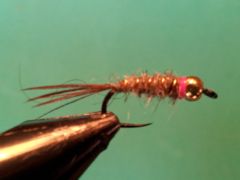
{{+1}}TBH collared hare and copper{{-1}}
{{start}}
A very effective fly yet perhaps the simplest of bead heads to tie. With elements of the hare and copper and an Adams fly in the dressing its logical that its default name became "hare and adams".{{end}}
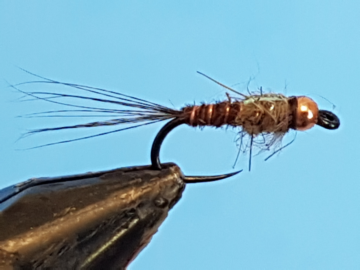
{{+1}}TBH flash back PTN{{-1}}
{{start}}
Jeremy Lucas was our river coach leading up to the 2012 World Fly Fishing Championships and was very keen on thinner flies for this early season competition. I think its a great interpretation of a classic fly and commend it for your consideration.{{end}}
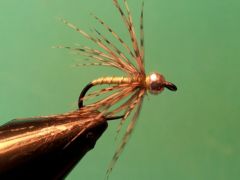
{{+1}}Tungsten bead head chartreuse and partridge spider{{-1}}
{{start}}
Bead head spiders fish very well in conjunction with traditional spider flies and give you the opportunity of adding a bit of flash to your team and more importantly get your team down a little. The benefit of that of course is that the added depth gives a little more vertical travel to your team of flies as they swing round at the end of the drift and start to lift, which as we all know is when the majority of hits occur when swinging spiders.{{end}}

{{+1}}Tungsten bead head orange and partridge spider{{-1}}
{{start}}
I nearly always fish my bead head spiders on the point in a team of two flies and with a relatively heavily weighted nymph such as a TBH duracell jig nymph, TBH collared hare and copper or TBH chocolate caddis nymph on the top dropper on the dropper 60 or 70 centimetres up the leader.{{end}}
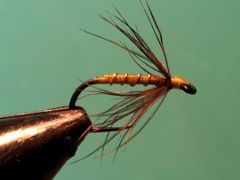
{{+1}}Greenwells spider{{-1}}
{{start}}
Many English flies have a spider version and Greenwells Glory is no exception. An interesting aspect of this fly is that the wing has been tied in beard style so as to camouflage the pint of the hook. The combination of the buggy shape, the movement of the soft hackle in the water often produce a hit. There is also the added benefit that they are so easy to tie. All river fly fishers should have a selection of English Spiders in their fly boxes.{{end}}

{{+1}}Red tag spider{{-1}}
{{start}}
This fly whilst being very different to a sparsely dressed north country spider has proven itself as a prolific fish catcher and has earned a place in my nymph fly box. I have no hesitation in tying it on either in combination with a traditional spider, a bead head nymph or heaven forbid a bead head version of a north country spider.{{end}}

{{+1}}Gold ribbed hares ear{{-1}}
{{start}}
This is probably up there in the top 3 or 4 best known nymph patterns. It's a pattern that has stood the test of time and is suggestive of a wide range of caddis and mayfly nymphs and is best fished close to the bottom. It doesn't matter if your in Argentina or Australia or any where between, past, above or below this is a true universal fly pattern.{{end}}

{{+1}}TBH chocolate caddis nymph{{-1}}
{{start}}
Caddis are are common throughout the year but with the greater concentrations occurring from September through to March. They inhabit both running and still water and are a significant food source for most trout often reputed to represent up to 30% of a trout's diet.{{end}}
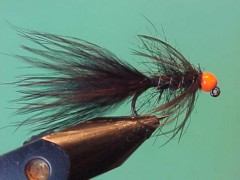
{{+1}}River Jig Bugger – CDC orange TBH and black{{-1}}
{{start}}
This is really good representation of a woolly bugger for river fishing. It sinks well and the jig hook encourages the fly to bounce along the bottom hook point up which of course mitigates snags. Whilst I have set the recipe out below for the brown, black and olive jig buggers I also tie my sparkle bugger and skirted buggers in the form of a jig bugger as shown in the photos below.{{end}}

{{+1}}Czech nymphs{{-1}}
{{start}}
The uncased caddis have quite a few similarities. They often adopt a curved fetal position and when they are free swimming they are more elongated still with a curved back but with a lifted head. The have short tail like filaments, have bodies of around seven or eight segments that may have abdominal gills at each segment, have darker heads with two or three segments and have 3 or more sets of legs below the head or toward the front of the grub.{{end}}













